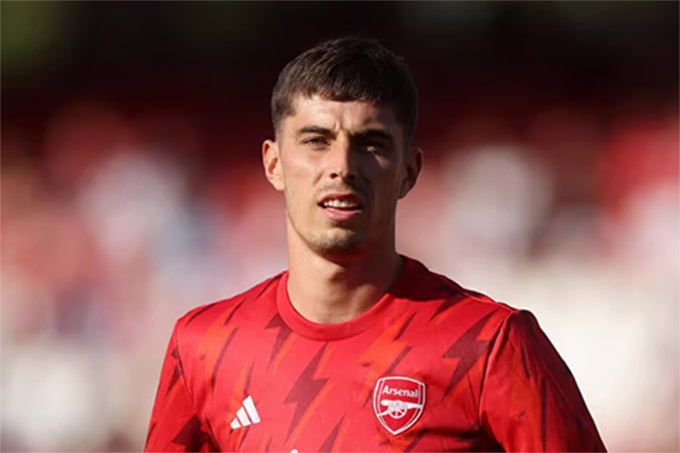When Mikel Arteta hailed Kai Havertz’s performance in Arsenal’s Community Shield win over Man City as superb, it could be generous, but also an affirmation of his desire to use the player. Germany was in the forward position at the time.
“The way he pressurizes, the way he moves intelligently to create valuable spaces for his teammates, even himself being in some great situations to score, shows the value. Kai’s rule. Unfortunately, Kai didn’t score. But that’s okay, he’s very strong and makes a significant impact on our game,” coach Arteta emphasized on Havertz’s performance in the role of No. 9 against Man City on August 6.

Does this contradict Arteta himself before, when he announced that he bought Havertz not to play as a striker, but to play in midfield? During the new pre-season, the German was tested by coach Arteta in the role of No 8 on the left wing of the London Gunners.
However, Gabriel Jesus’ recurrence of a knee injury in early August has given the 41-year-old strategist many new testing opportunities. Of the three rookies, with the exception of Jurrien Timber playing in defence, Declan Rice played at number 6 and number 8 on the left flank, while Havertz played as a striker and played at number 8 on the left flank.
Many people expect Arteta to let Eddie Nketiah or Leandro Trossard lead Arsenal’s attack in the Community Shield match against Man City. However, in the end, Havertz was the tallest player in the Gunners attack in this match. And, the arrival of the versatile German player has brought many differences to The Gunners .
Havertz created good pressing, many times helping Arsenal receive long passes to the ball to escape the pressure of Man City. Some touches of the ball and then turned to finish the goal of The Citizens also made a special impression. In general, Havertz played relatively well in the “virtual 9” game against Man City to help Arsenal escape considerable pressure from the ball control style of coach Pep Guardiola’s teachers and students.

“Kai played most of the time as an attacking midfielder. But he can play on the right wing, has played as a winger, the number 9, the virtual 9. So we’ll see what role he plays in this game,” Arteta once emphasized when asked about Havertz’s position before the match against Man City.
On the current Arsenal attack, Arteta has 5 options for the striker position with at least 3 different styles. Jesus and Trossard are quite similar as solutions that can comfortably move wide, closely connect to satellites and are ready to make one more shot or final pass to score.
Nketiah and Folarin Balogun are a bit different, but both tend to move in the box and do best in the 16m50 area. And Havertz can become a “decoy” like in the Community Shield match, where Arsenal need to develop their play.

The flexibility of the squad is the key to making a difference in the matches. It is also why Arsenal have focused more on the qualities of their players than their position in recent years. “I don’t want Kai to stay in one position forever. I also like to do the same with other players. Because when you do that, you become more unpredictable, open up options and open their minds to other things.”
Obviously, Arteta wants the German player to be like a chameleon in front of a different opponent. The Spaniard emphasized that he did not want to use Havertz in a fixed position, that it would be a waste of the talent of the 24-year-old German player. Arteta bought Havertz not as a 1:1 replacement for Granit Xhaka or any other player.
And against Crystal Palace tomorrow morning, Will Havertz play number 8 or number 9? Let’s wait and see!
